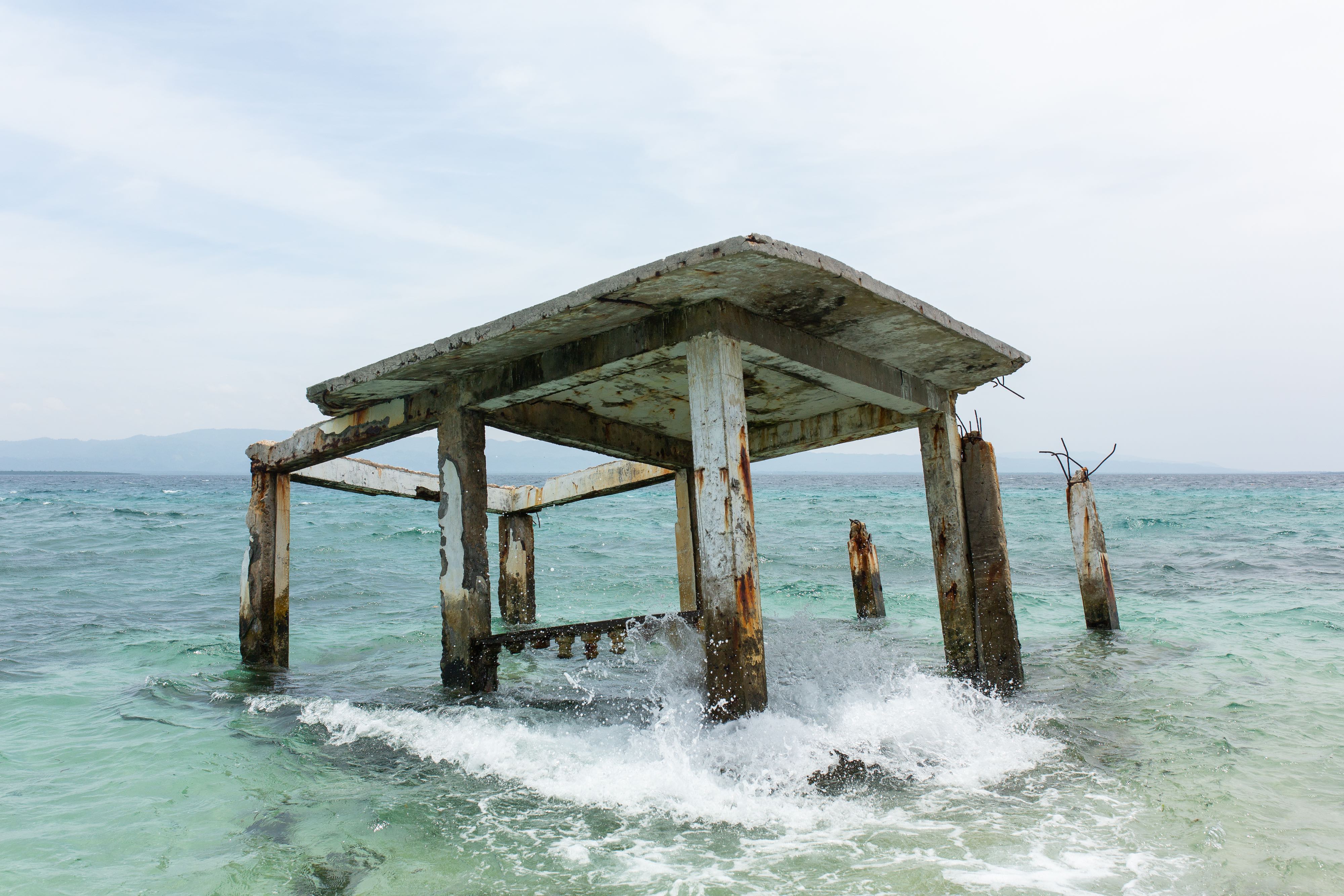Sinking islands of Bohol may already be 'uninhabitable' due to slow-onset sea level rise caused by climate change

Bilangbilangan off the coast of Tubigon, Bohol had been a densely populated island, when its outer areas began subsiding following the 7.2 magnitude earthquake that struck Bohol in 2013. Its residents had to go farther inland to keep safe but since then, the island has experienced sinking.
By standards of previous studies, and because of the slow-onset of sea level rise brought on by climate change, Bilangbilangan, along with the islands of Batasan and Inanuran, may already be considered uninhabitable.
Sand bars have become a distant memory and a number of houses have been left derelict. Meanwhile sea level rise is also affecting their fish catch. According to Greenpeace, areas around the tropics are predicted to see 40% declines in potential seafood catch by 2050.
As Planet Earth continues to warm, glaciers in the arctic will continue to melt. This melting will add more water into the ocean, leaving islands like Bilangbilangan, Batasan, and Inanuran to continue to bear the brunt of climate change.
In a Generation Restoration documentary, French glaciologist Dr. Heidi Sevestre explained, "In places where the ocean is warmer, such as around the Philippines, it's making the ocean dilate even more, taking a little more room. So the more the ice is melting in the arctic, the more the Philippines will experience sea level rise."
Unfortunately, it's not just inland flow that residents of islands like Bilangbilangan, Batasan, and Inanuran must keep safe from. There are also cyclones, which have become stronger and more frequent, thanks to a warmer sea surface. It's not unlike what they experienced in 2021, when Super Typhoon Odette came battering in and hastening the collapse of these islands.
A 2019 study by Climate Central said the Philippines is one of eight Asian countries at great risk due to coastal flooding made worse by climate change in 2050.
A quick look on CostalDEM, the study's coastal risk screening tool, showed Bilangbilangan, Batasan, and Inanuran in the red — or below the annual flood level — by 2050.
— LA, GMA Integrated News




